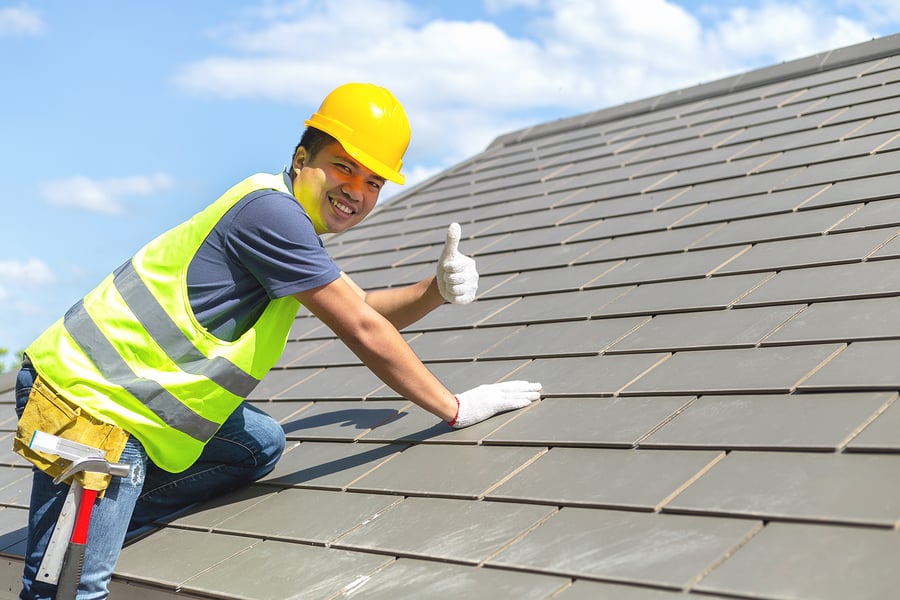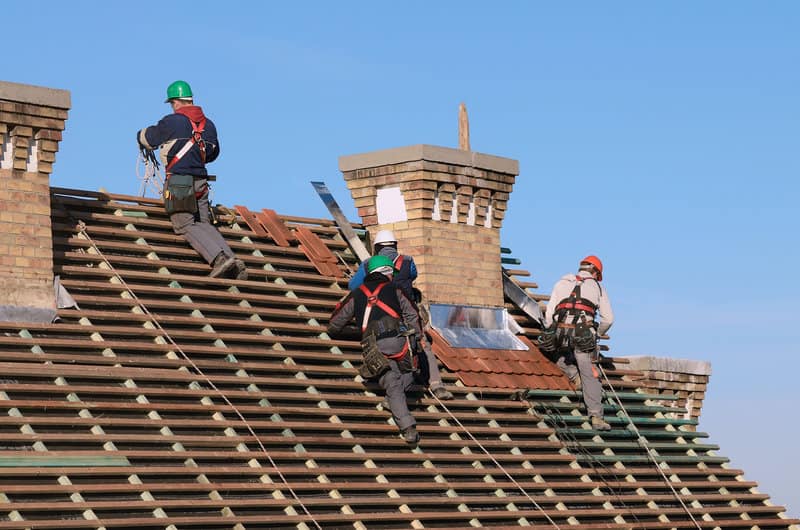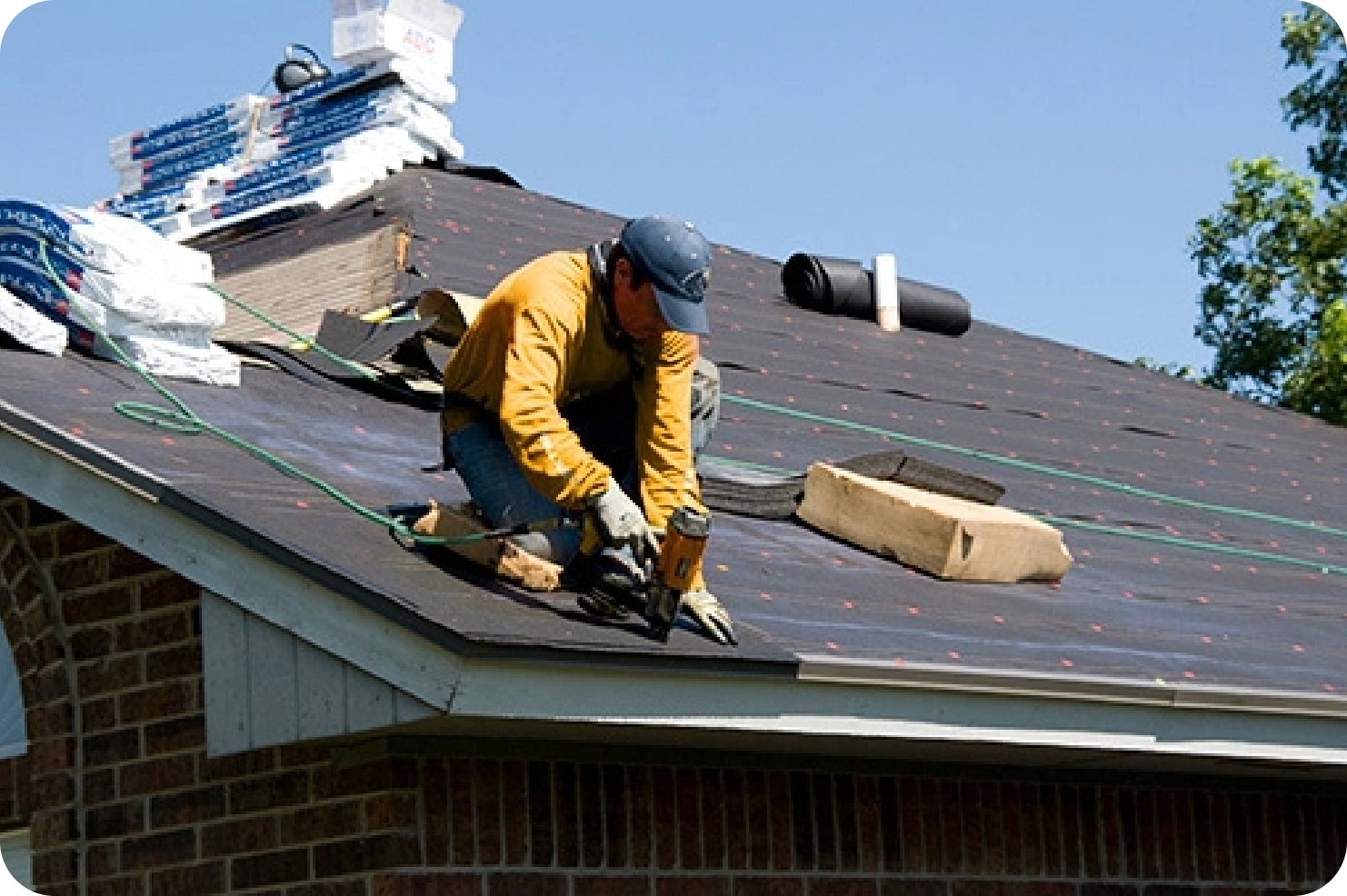How to Examine Different Roof Covering Alternatives for Your Building Demands
Reviewing roof options for your structure needs an extensive strategy that takes into consideration various factors such as the planned use of the framework, local climate conditions, and material qualities - Roofer. It is essential to consider the benefits and drawbacks of various roofing types, from asphalt shingles to steel and clay tiles, while additionally factoring in initial expenses and lasting maintenance.
Analyzing Your Structure's Demands
To efficiently review roofing alternatives, begin by completely assessing your building's needs. Begin by considering the building's planned use, as different frameworks might require differing roof covering specifications. As an example, residential roofings frequently focus on visual appeals and insulation, while business structures might concentrate on longevity and load-bearing capacity.
Following, evaluate the neighborhood climate conditions that will certainly influence roof performance. Variables such as temperature level changes, rainfall degrees, and wind patterns can affect product choice and style. A roof that succeeds in a warm environment may not carry out also in areas vulnerable to hefty snowfall or severe warmth.
Additionally, assess the architectural honesty of your building. Make sure that the existing structure can support the chosen roof materials, especially if taking into consideration larger options. It is also important to evaluate any kind of local building codes or laws that may determine particular requirements for roof.

Comparing Roofing Materials
When a thorough analysis of your structure's demands has actually been completed, the following step entails contrasting numerous roof covering products. Each material uses distinctive benefits and drawbacks, making it necessary to straighten your choice with your specific demands and scenarios.
Asphalt shingles are extensively acknowledged for their price and convenience of installation, making them a popular choice for property buildings. On the various other hand, steel roofing, known for its durability and longevity, can endure rough weather however may come with a greater preliminary financial investment.
Clay and concrete tiles offer outstanding thermal insulation and aesthetic allure, particularly for Mediterranean-style style, yet they need a more durable architectural support due to their weight. Timber drinks deal a natural appearance and excellent insulation homes yet may require a lot more maintenance and are at risk to fire threats.
Evaluating Expense and Spending Plan
Examining your roofing choices necessitates a mindful examination of cost and budget plan considerations. The total budget for a roof job makes up a number of variables, including material prices, labor costs, upkeep, and potential long-lasting savings. It is important to develop a clear spending plan before discovering certain roof covering materials, as this will certainly guide the decision-making process and aid you prevent overspending.
Begin by getting quotes from numerous professionals to comprehend labor costs in your region. Guarantee that these price quotes include all necessary services, such as removal of the old roofing, installation, and any type of additional features, like insulation or ventilation renovations - Roofer. Next, examine the expense of numerous roofing materials, considering both preliminary setup prices and anticipated life-span

Recognizing Power Efficiency
Energy effectiveness plays an essential function in the selection of roof covering products and systems, dramatically influencing both energy consumption and general comfort within a my link building. An appropriate roof can improve thermal performance, lowering the need for heating and cooling down systems, which subsequently decreases energy costs and reduces ecological impact.
When evaluating roof options, think about materials that mirror rather than soak up warm. Furthermore, appropriate insulation and ventilation are vital to optimize the energy efficiency of the whole roof covering system.
An additional vital aspect is the roof covering system's longevity and upkeep demands. Durable materials that need less constant replacement add to lasting energy financial savings. Moreover, the power performance of a roof can additionally be examined with its compliance with established sustainability scores such as ENERGY STAR or LEED.
Thinking About Visual Appeal
A roof covering's visual charm significantly influences the total appearance of a building, complementing its architectural style and enhancing aesthetic allure. Toledo Roofer. When reviewing roof alternatives, it is vital to think about how the picked material, color, and layout will harmonize with the existing framework and area. A properly designed roofing system can raise also the most basic of buildings, changing them into visual centerpieces
Various roof materials supply numerous visual qualities. For instance, typical tiles might evoke a classic charm, while metal roof covering can pass on a contemporary, smooth look. Furthermore, the shade of the roof material plays a critical role; lighter shades can make a structure appear more roomy, while darker tones may produce a cozier atmosphere.
Furthermore, architectural aspects, such as find here dormers and eaves, can improve the roofing's visual effect. It is suggested to consult with expert developers or architects to ensure the picked roofing alternative straightens with the total layout intent. Eventually, a roofing system needs to not only provide practical advantages however likewise contribute favorably to the building's visual, reflecting the proprietor's taste and the personality of the surrounding environment.
Conclusion
